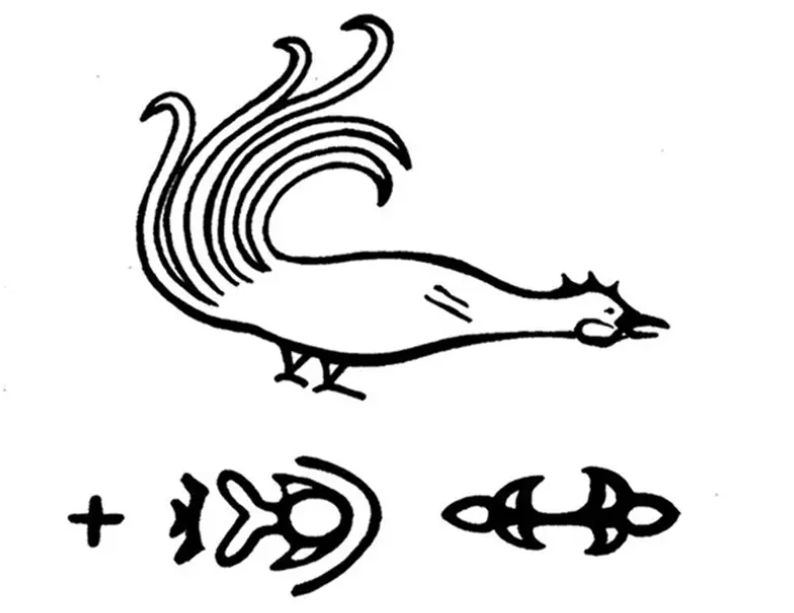The Whippet #187: Hooves, stripes, paws and antler tips
On this page

Hello, good morning!
Important Saint update: this Sunday (August 17) is the feast day of St. Hyacinth, unofficial patron saint of weightlifters.
During the 1240 Siege of Kiev (by the Mongols), the priests are getting ready to flee. A priest runs back to save the ciborum (fancy cup with the eucharist wafers in it). While he's there, he hears the big stone statue of Mary saying "take meeeeee!" It's way too heavy to lift, but he lifts it anyway and carries it to safety.
He's not the official patron saint of weightlifters, but the whole 'patron saint of bakers and IT workers' thing is all unofficial folklore anyway, so he's the patron saint if we say he is.
In addition, St Hyacinth properly is the patron saint of pierogies.
Sunday plans: get swole / eat dumplings 🙏

Extreme brain weirdness, in no particular order
—
A 24-year-old woman seeks treatment for dizzy spells and nausea. A CAT scan shows her entire cerebellum is missing. Just not there. The cerebellum contains 80% of the brains neurons and is widely regarded as 'nice to have'. The woman has always had trouble walking steadily, and her speech is a bit slurred, but apart from that she's fine. [Source]
—
An interview with a man who used to have Cotard's syndrome - the delusion that one is already dead. It sounds awful; like extreme major depression. Nothing has flavour, he takes enjoyment in nothing and cannot see the point in any speech or action. Why put food in the mouth of a corpse?
This feeling prompted him on occasion to visit the local graveyard. “I just felt I might as well stay there. It was the closest I could get to death. The police would come and get me, though, and take me back home.”
A PET scan shows he has the brain activity of someone in a coma, or under anaesthesia.
From the neurologist: “I’ve been analysing PET scans for 15 years and I’ve never seen anyone who was on his feet, who was interacting with people, with such an abnormal scan result. Seeing this pattern in someone who is awake is quite unique to my knowledge.” [Source]
—
A 44-year-old man seeks treatment for weakness in his left leg. When the doctors hear he had hydrocephalus as a kid (water on the brain), they do an MRI just in case it's relevant. They discover that a fluid-filled sac has filled most of his skull, "leaving little more than a thin sheet of actual brain tissue".
This guy's brain on the left, healthy brain on the right.

He has a regular family life and job. His IQ* is a fair bit below average, but not to the point of being classified as intellectually disabled. He seems to get by fine with his laminate brain. [Source]
—
My point in highlighting these three cases, is not just "whoa, crazy" – it's that, apart from the brain scans, there's nothing crazy about them at all. You wouldn't get much of an Oliver Sacks story out of "the man with weakness in one leg" or "the woman who got dizzy spells". Cotard's syndrome is in Oliver Sacks territory, but according to his brain scan, he shouldn't even be awake.
The assumption is that the brain is so incredibly adaptable, that when it doesn't have a cerebellum from birth, or when the brain is shrunk very slowly over time, it can grow workarounds. But still... that much??
To quote a brain specialist in the third story, “What I find amazing to this day is how the brain can deal with something which you think should not be compatible with life.”
More reason to throw a grain of salt on any simplistic "this part of the brain lights up when people do x" explanations for behaviour.
—
Here are 12 neuroscientists responding to the question of whether we will ever understand the brain. Not one of them says anything like "we're almost there".
Some cherry-picked quotes:
- "I cannot see there being a point, ever, at which we could say we have understood the brain."
- "the idea that we will ever understand the brain seems fanciful"
- "To me, if I understand something, I’m able to make some kind of internally logical prediction about it. [...] At this point, if we were given a circuit of neurons, we don’t even have general rules to make a guess about what might happen in that circuit."
- "we know so little about how the brain works – we barely understand how a single neuron computes information"
- "I don’t think it is going to be within the capability of any single human brain to understand such incredibly complex things."


'Disaster' literally means 'ill-starred'
As in, astrologically cursed. 'Dis' meaning 'bad' and 'aster' meaning star in Greek (cf. astronaut): dis-aster.
Like in Romeo & Juliet:
Two households, both alike in dignity / In fair Verona, where we lay our scene /
/ etc etc / a pair of disastrous lovers take their life
Where would we be without Etymonline? They have an app, btw! (So if you use a focus blocker, you can block the internet but still have wholesome and nutritious etymonline)

Tattoos from an ancient Siberian ice mummy
(not Ötzi)


The gryphon attacking a hoofed guy is on her left forearm; the rooster and decorative-things are on her hands
These tattoos were found on the body of "a semi-nomadic Iron Age pastoralist from the Altai mountains in Siberia, who was aged about 50 when she died in the 3rd or 4th century BC." (She hasn't been given a name, or rather, she hasn't been given a new name 2300 years after she was given her first one.)
It looks to me like a gryphon attacking a deer-type animal ('ungulate') on the left, and a rooster on the right, but the archaeology team says of the rooster: "tattooed Pazyryk bodies are marked with a mix of realistic and fantastical animals, so it may be that the artist didn’t intend the bird to be a representation of a living creature."

I can't really tell the skill difference between the different tattoos, but the archaeologists can:
The right-forearm tattoo also features techniques that are challenging from the tattooist’s perspective. The use of clear parallel lines with negative space, along with the finer details in the hooves, stripes, paws and antler tips, likely required at least two different tool arrangements. The linework is clear and consistent, with nearly double the amount of outlining present on the left forearm. Achieving such crisp and uniform results, especially with hand-poked methods, would be a challenge even for contemporary tattooists using modern equipment.
About the gryphon attacking ungulate, they say the perspective is wrong, it's less anatomically accurate, it's placed on an 'easy mode' part of the arm, and "the artist may have either lacked the time or skill to develop the composition."
They're gonna feel so bad if that tattooist gets Encino-Man'd and reads their paper someday.
<High-resolution near-infrared data reveal Pazyryk tattooing methods>

Headstone at Highgate Cemetery

My friend Lisa says: "This is all anyone wants people to say of them after they've gone."
100%

Conditioning = a more helpful framework than trauma (maybe?)
So I think a lot of people who didn't have obviously horrific childhoods baulk at using the word 'trauma'. They don't want to seem melodramatic, or imply their parents were abusive when they just didn't know better. Actually, a lot of people who did have obviously horrific childhoods baulk at it too (and, yes, I've also seen people who call any inconvenience 'trauma'). The word has become a gravitational weight that drags every childhood-harm conversation into its orbit.
So instead of getting hung up on the question of what 'counts' as trauma, I think it's helpful to think in terms of 'conditioning' instead.
I'll give you a really neutral example: I feel uncomfortable putting a knife into an unplugged toaster. I even feel a bit uncomfortable putting a plastic knife into an unplugged toaster. This feeling clearly goes beyond the rational avoidance of electrocution; I know how circuits work. And I have that discomfort because my mum heavily and repeatedly emphasised never putting knives in toasters.
I wasn't traumatised by the childhood toaster-conversations, and my mum was 100% correct to warn me of the danger – but it's a simple statement of fact that I have a conditioned emotional response to it.
Okay, so what if your mum repeatedly fretted about her diet and weight, and your diet and weight, and that affects your adult relationship with food and your body. You could spend a lot of time battling the question of "but was it trauma if it wasn't said with cruelty? If she was just expressing her sincere concerns?" Or you could not worry about defining it and just say, "it conditioned me to have certain feelings and attitudes to food, and that's something I have to deal with now."
And the same with a friend: if you know someone who definitely was traumatised by horrific treatment, but they don't want to call it trauma for some reason, you can dodge that and use 'conditioning' to talk about the present-day effects instead.
I'm not in any way trying to police your use of the word trauma. If that's the right word for you, then use it. I'm just trying to give you another tool that lets you avoid getting hung up on the label, and move on to actually working on the problem itself.
To re-emphasise: I'm NOT saying "conditioning is the term for bad things that aren't as bad as trauma". I'm saying "conditioning is a term that lets you bypass the issue of whether something is trauma or not".
(For all other questions about what label to use in a given situation, see The Label Song by Jude Perl.)
Oh! Coping mechanisms are like technical debt
Okay I literally just now came across a great analogy for the kind of trauma/conditioning I'm talking about:
If you are developing a piece of software, and you need to roll out a feature really quickly, you might do a rush job and cut a bunch of corners to get it out on time. Ideally, you would go back and do it all properly once you had the luxury of time, but in practice, you might just move on to the next thing. The issues that pile up from doing this are called 'technical debt'.
That's a lot like a no-longer-helpful coping mechanism: you live with scary, unpredictable parents, so you learn to manage their emotions to keep them in a good mood as much as possible. That's a good short-term solution, and it keeps you safe, but it also creates a bunch of issues for future-you to deal with (like maybe you never tell your partner what your emotional needs are because you don't want to cause trouble).
If that's not making much sense, Sasha Chapin gives a lot more examples in this... long review of an obscurant meditation book? I'll link directly to the technical debt bit.
Anyway I like that, it's a framing that makes it feel a lot less intense/earnest/heavy to bring up (unless you're a programmer maybe. I'm imagining how I would feel if someone framed my maladaptive coping mechanisms as 'emails you should have replied to years ago' 💀)
Here's the link to the comments section. It's worth reading; everyone is always very nice and has interesting anecdotes (no pressure though).
I should probably put this button in the same place every issue, oh well.

Comments
Sign in or become a Whippet subscriber (free or paid) to add your thoughts.
Just enter your email below to get a log in link.
A newsletter for the terminally curious
Arrives in your inbox every second Thursday.
